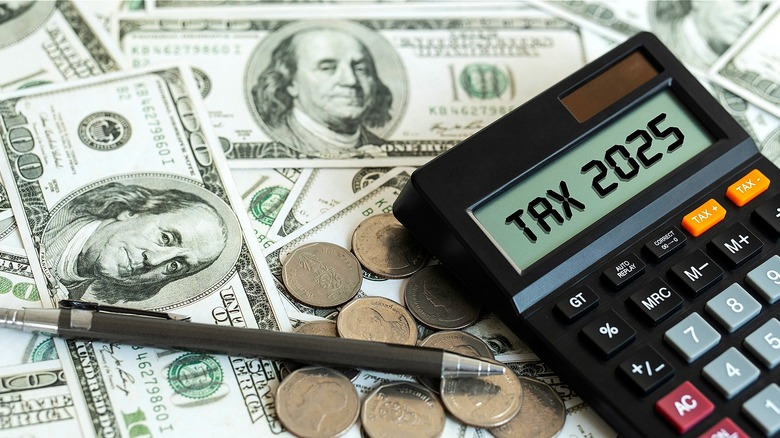Will The New 2025 Income Tax Brackets And Standard Deductions Affect You?
A few weeks ago the Internal Revenue Service announced its latest round of inflation adjustments for the 2025 tax year. These annual tweaks are designed to mitigate income tax levied on higher incomes as a result of cost-of-living wage increases for American workers. Otherwise, in spite of higher income, such workers could find their spending power unchanged due to increased tax obligations.
In more simplified terms, this announcement premieres the latest federal income tax brackets (here's a simple way to tell which bracket you're in) and standard deductions available to taxpayers. For 2025, the new brackets for single filers are as follows:
-
10%: taxable income up to $11,925 (increased from $11,600 in 2024)
-
12%: taxable income of $11,926 to $48,475 (increased from $47,150 in 2024)
-
22%: taxable income of $48,476 to $103,350 (increased from $100,525 in 2024)
-
24%: taxable income of $103,351 to $197,300 (increased from $191,950 in 2024)
-
32%: taxable income of $197,301 to $250,525 (increased from $243,725 in 2024)
-
35%: taxable income of $250,526 to $626,350 (increased from $609,350 in 2024)
-
37%: taxable income of $626,351 or more (increased from $609,351 in 2024)
Note that if you're part of a married couple filing jointly, the income thresholds are exactly double the amounts listed above for single filers in the 10% to 35% brackets. For example, a married couple must earn more than $96,950 to enter the 22% tax bracket ($48,475 x 2). The exception to the doubling rule for married couples is at the utmost echelon; that is, the 37% rate is triggered with a combined income of $751,600 or more.
Standard deductions are higher in 2025 as well
On average, Americans can earn approximately 2.8% more income in 2025 without moving into a higher tax bracket than they found themselves in 2024. On the other hand, if your income and deductions remain unchanged from 2024, you'll pay less income tax.
Speaking of deductions, the standard deduction for single filers increased to $15,000 for 2025, a $400 jump from 2024. Similarly, married couples filing jointly receive a standard deduction of $30,000, which represents an $800 increase from the prior year. Finally, a head of household will enjoy a $22,500 standard deduction, up $600 from previously.
If you're wondering what exactly a standard deduction is, it's simply a portion of your income that's not subject to income tax. For example, a single filer with a gross income of $60,000 per year would have a taxable income of $45,000 ($60,000 minus the $15,000 standard deduction). Although many Americans opt for a standard tax deduction, the option also exists for filers to itemize their deductions, which could result in a larger (or smaller, if done incorrectly) tax deduction.
Taxpayers with mortgage payments, insurance premiums, out-of-pocket medical costs, or large charitable donations — among other expenses — might consider itemized deductions. However, you'll want to do your homework or consult with a tax professional to be sure.
The IRS thinks inflation is moderating
Although certain aspects of the economy — like record-high home prices — are stubbornly sticky, government statistics show that inflation has slowed considerably since 2022. That's attributed to the supply chain returning to normal after the COVID-19 pandemic, as well as the Federal Reserve's policy of higher interest rates to curb inflation beginning in 2022. As such, the Internal Revenue Service's 2025 annual adjustments averaging 2.8% are smaller than in years past. For example, the 2023 and 2024 adjustments to allow for greater income were 7.1% and 5.4%, respectively.
Besides adjustments in marginal tax rates and standard deductions, other IRS provisions have also been adjusted to reflect the new inflation reality. For example, the annual contribution limits for health flexible spending accounts (FSA) and health savings accounts (HSA) ratchet to $3,300 and $4,300 ($8,550 for families), respectively. Similarly, the gift tax exclusion and federal estate tax exclusion are both higher as well.
If you're suffering from insomnia, a complete 27-page document detailing every nook and cranny of the new 2025 tax provisions is available at the IRS website. Otherwise, the agency has helpfully summarized the highlights for you in a much more digestible single-page release.


